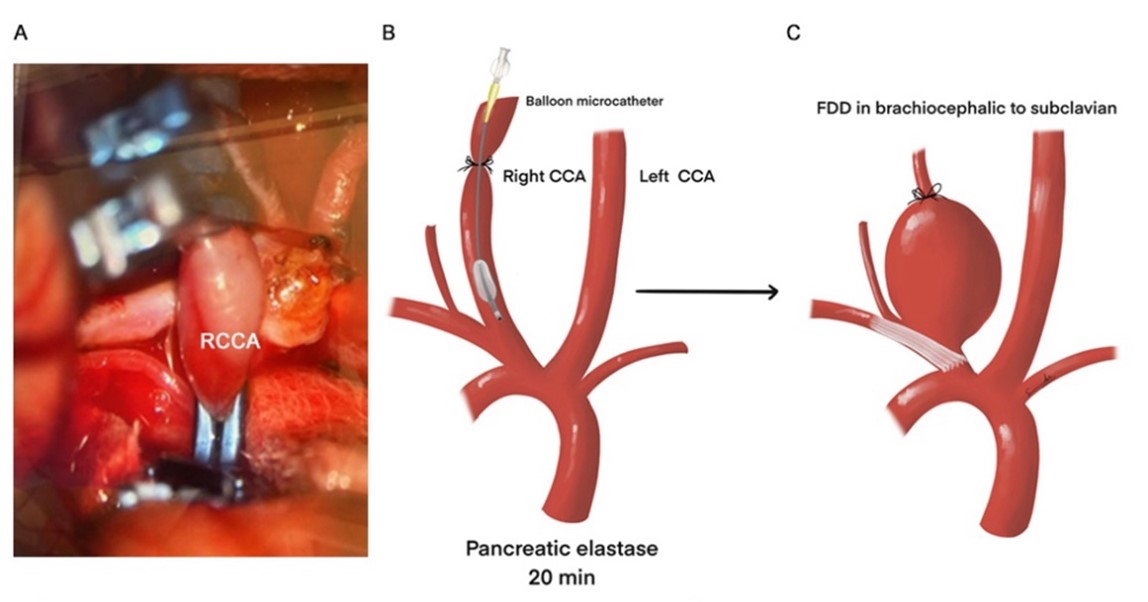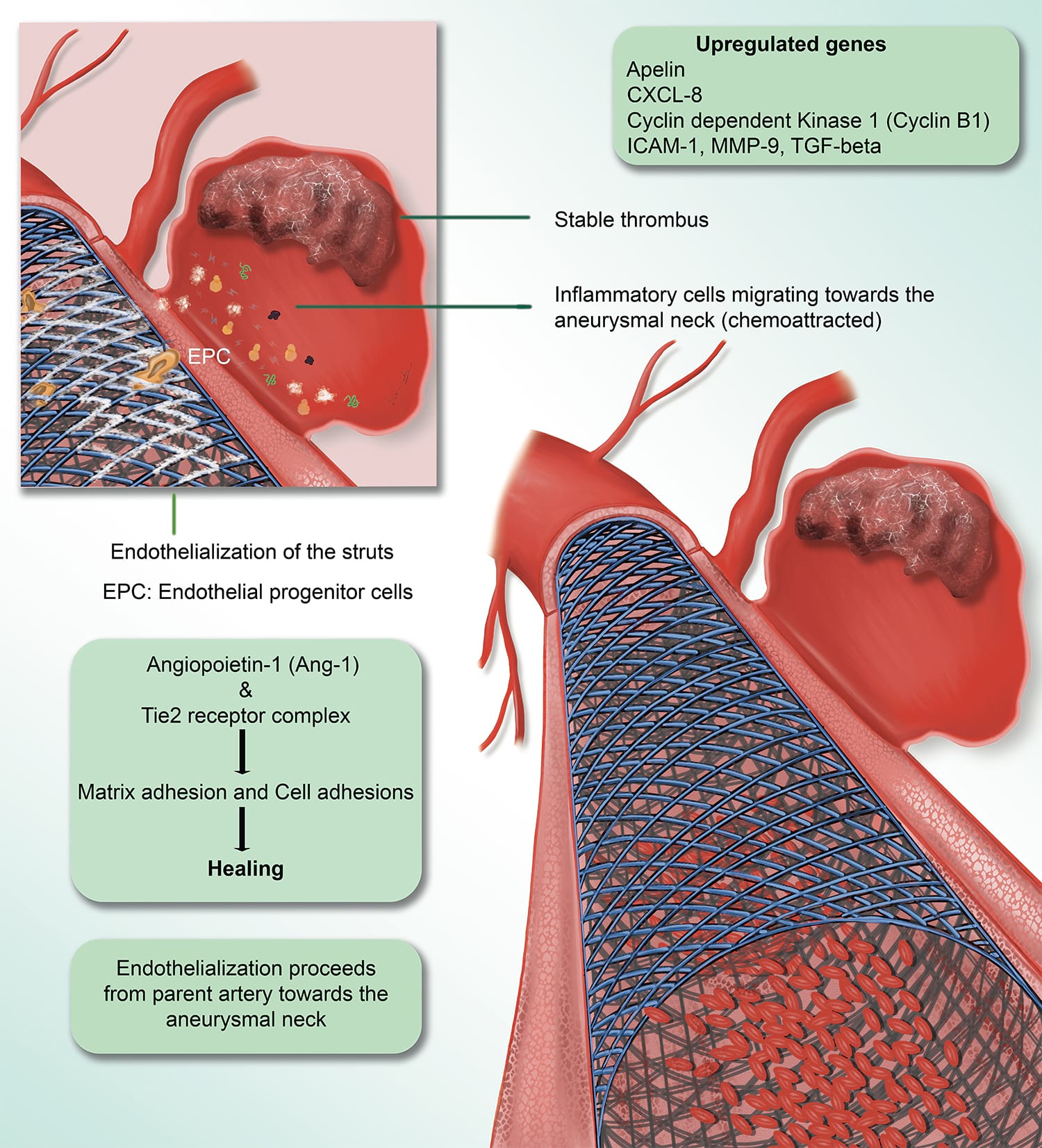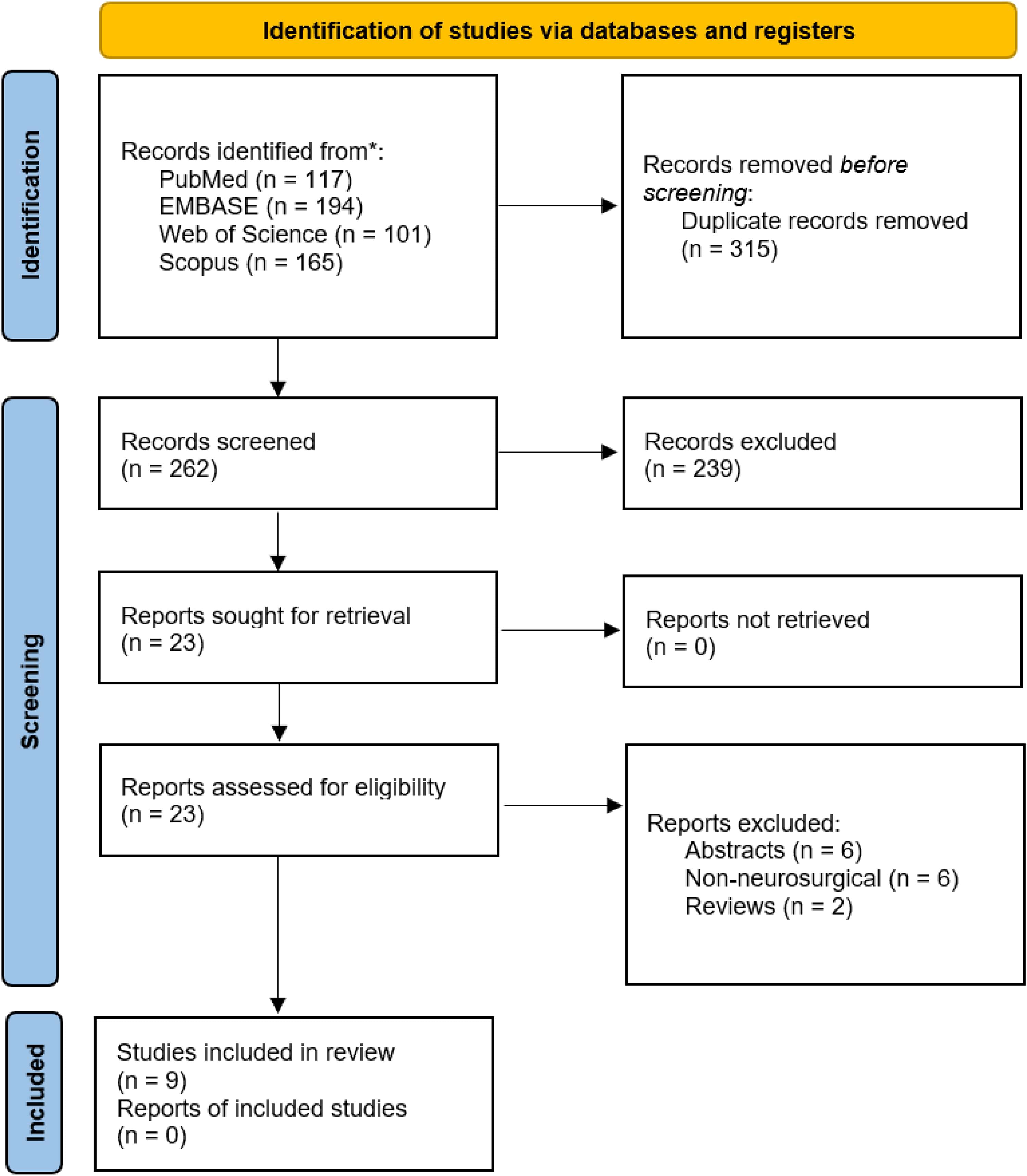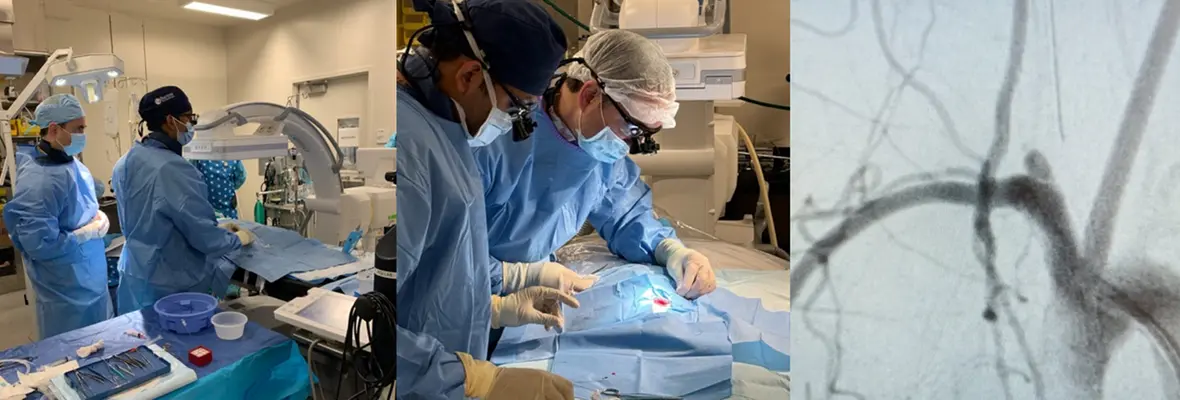Current Research
The lab’s current research interests are centered around translational research related to the development, treatment, and outcomes of intracranial aneurysms.
We are investigating epigenetic factors contributing to the formation and rupture of intracranial aneurysms, analyzes transcriptomic changes resulting from flow diversion implantation, and developing new imaging tools based on 3D angiography. The new construction will also add studies involving robotic angiography to the portfolio of investigations.

Transcriptomics of intracranial aneurysms: current state and opportunities in flow diversion

Over the last 2 decades, the field of transcriptomics has emerged as a major subdiscipline in biology. Transcriptomic techniques have been used by many groups over this time to better understand intracranial aneurysm development, rupture, and treatment. However, only a few studies have applied transcriptomics to understand the mechanisms behind flow diversion (FD) specifically, despite its increasing importance in the neurointerventional armamentarium.
FD is an increasingly safe and effective treatment option for intracranial aneurysms. However, the clinical understanding and use of FD has far outpaced the understanding of the underlying mechanisms. To make FD more predictable, clinically efficacious, and safe, it is important to understand the biological mechanisms at play that lead to successful and unsuccessful FD.
In this review, the authors focus on the current understanding of FD biology, the recent advances in transcriptomics, and what future studies could be performed to deepen the understanding of FD. They propose the new concept of the FD microenvironment to be studied, which may unlock a deeper biological understanding. This review provides the background for prospective studies into the development of targeted aneurysm therapy, whether by modified devices or by medical adjuncts.
Endovascular biopsy in neurointerventional surgery: A systematic review

Endothelial cells (EC) continuously line the cerebrovasculature. Molecular aberrations in the ECs are hallmarks and contributory factors to the development of cerebrovascular diseases, including intracranial aneurysms and arteriovenous malformations. Endovascular biopsy has been introduced as a method to harvest ECs and obtain relevant biologic information. We aimed to summarize the literature on endovascular biopsy in neurointerventional surgery.


